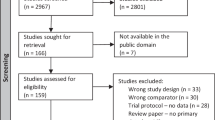Abstract
Objectives:
To evaluate the impact of initiating early nasal continuous positive airway pressure (ENCPAP) on the length of hospital stay (LOS) for the very low birth weight (VLBW) infants.
Study design:
LOS at the George Washington University Hospital (GW) after the institution of ENCPAP policy was compared to benchmark values using two-tail t-tests. The incidence of neonatal morbidity was calculated using Bonferroni corrected 95% confidence interval as compared to benchmark rates (α=0.001). Comparisons were repeated after stratification of the population into four birth weight subcategories: group A (GrpA) (501 to 750 g), GrpB (751 to 1000 g), GrpC (1001 to 1250 g) and GrpD (1251 to 1500 g).
Results:
We studied 228 consecutive VLBW infants (birth weight: 995±294 g and gestational age: 27.7±2.7 weeks). Compared to benchmark values, the GW experience was associated with a significant reduction of 5.1 days in LOS (55.9±25.2 vs 61±32 days; P=0.04). The decrease in LOS was consistent in all subgroups, but was most noticeable in infants of the smallest weight subcategory (LOS in GrpA=86±21 vs 104±32, P=0.004; in GrpB=69.9±16.7 vs 79±27, P=0.018; in GrpC=48.2±13 vs 56±22, P<0.001 and in GrpD=31.7±12.5 vs 40±19, P=0.003).
In the overall population, a lower incidence of chronic lung disease (CLD) (17.8 vs 29%, P<0.001) was also noted. There were no differences in mortality rates (9 vs 14%), or the incidence of necrotizing enterocolitis (NEC) (8 vs 6%) or intraventricular hemorrhage (6.2 vs 9%) between GW and the established benchmark rates.
Conclusion:
ENCPAP may reduce LOS in VLBW infants in our study population. This relatively shorter LOS was associated with a lower incidence of CLD, which may be a contributing factor.
This is a preview of subscription content, access via your institution
Access options
Subscribe to this journal
Receive 12 print issues and online access
$259.00 per year
only $21.58 per issue
Buy this article
- Purchase on Springer Link
- Instant access to full article PDF
Prices may be subject to local taxes which are calculated during checkout


Similar content being viewed by others
References
Aly H, Milner JD, Patel K, El-Mohandes AE . Does the experience with the use of nasal continuous positive airway pressure improve over time in extremely low birth weight infants? Pediatrics 2004; 114: 697–702.
Lindner W, Vossbeck S, Hummler H, Pohlandt F . Delivery room management of extremely low birth weight infants: spontaneous breathing or intubation? Pediatrics 1999; 103: 961–967.
Van Marter LJ, Allred EN, Pagano M, Sanocka U, Parad R, Moore M et al. Do clinical markers of barotrauma and oxygen toxicity explain interhospital variation in rates of chronic lung disease? The Neonatology Committee for the Developmental Network. Pediatrics 2000; 105: 1194–1201.
Vermont Oxford Network, 2001 Database Summary.
Zhang S, Garbutt V, McBride JT . Strain-induced growth of the immature lung. J Appl Physiol 1996; 81: 1471–1476.
Nguyen AT, Aly H, Milner J, Patel KM, El-Mohandes A . Partial pressure of carbon dioxide in extremely low birth weight infants supported by nasal prongs continuous positive airway pressure. Pediatrics 2003; 112: e208–e211.
Pryds O, Christensen NJ, Friis-Hansen B . Increased cerebral blood flow and plasma epinephrine in hypoglycemic preterm neonates. Pediatrics 1990; 85: 172–176.
Perlman JM, McMenamin JP, Volpe JJ . Fluctuating cerebral blood-flow velocity in respiratory-distress syndrome. Relation to the development of intraventricular hemorrhage. N Eng J Med 1983; 309: 204–209.
Amato M, Fauchere JC, Hermann Jr U . Coagulation abnormalities in low birth weight infants with peri-intraventricular hemorrhage. Neuropediatrics 1988; 19: 154–157.
York JR, Landers S, Kirby RS, Arbogast PG, Penn JS . Arterial oxygen fluctuation and retinopathy of prematurity in very-low-birth-weight infants. J Perinatol 2004; 24: 82–87.
Chow LC, Wright KW, Sola A, CSMC Oxygen Administration Study Group. Can change in clinical practice decrease the incidence of severe retinopathy of prematurity in very low birth weight infants? Pediatrics 2003; 111: 339–345.
Jaile JC, Levin T, Wung JT, Abramson SJ, Ruzal-Shapiro C, Berdon WE . Benign gaseous distension of the bowel in premature infants treat with nasal continuous airway pressure: a study of contributing factors. Am J Roentgenol 1992; 158: 125–127.
Acknowledgements
We would like to recognize the Vermont Oxford network for their effort in compiling and organizing a comprehensive neonatal data set, and for providing us the opportunity of including their outcome data in our comparative analyses.
Author information
Authors and Affiliations
Corresponding author
Rights and permissions
About this article
Cite this article
Aly, H., Massaro, A. & El-Mohandes, A. Can delivery room management impact the length of hospital stay in premature infants?. J Perinatol 26, 593–596 (2006). https://doi.org/10.1038/sj.jp.7211575
Received:
Revised:
Accepted:
Published:
Issue Date:
DOI: https://doi.org/10.1038/sj.jp.7211575
Keywords
This article is cited by
-
Complications associated with incorrect use of nasal CPAP
Journal of Perinatology (2023)
-
Effects of delivery room quality improvement on premature infant outcomes
Journal of Perinatology (2017)



